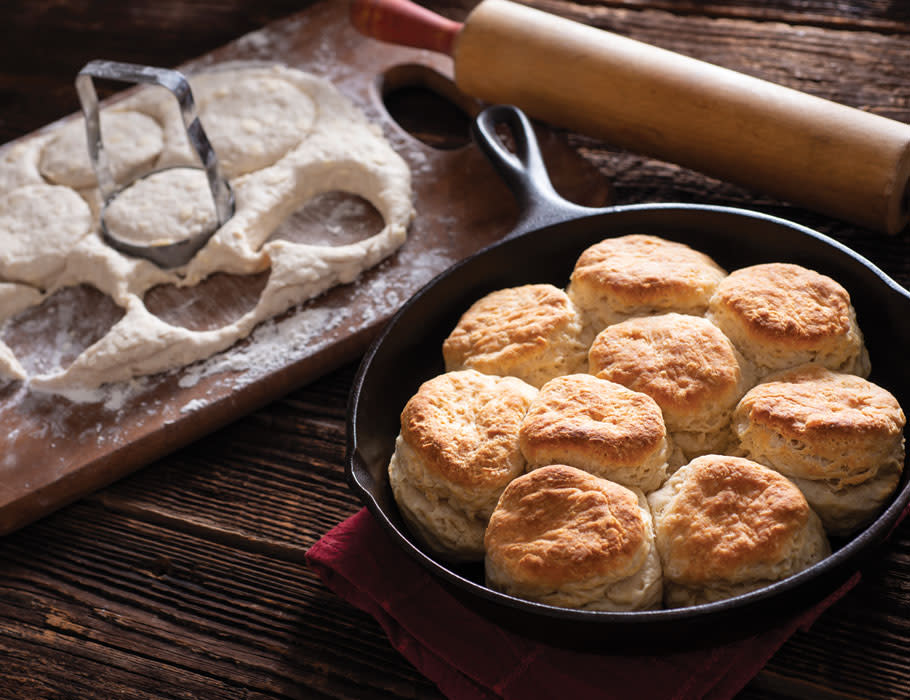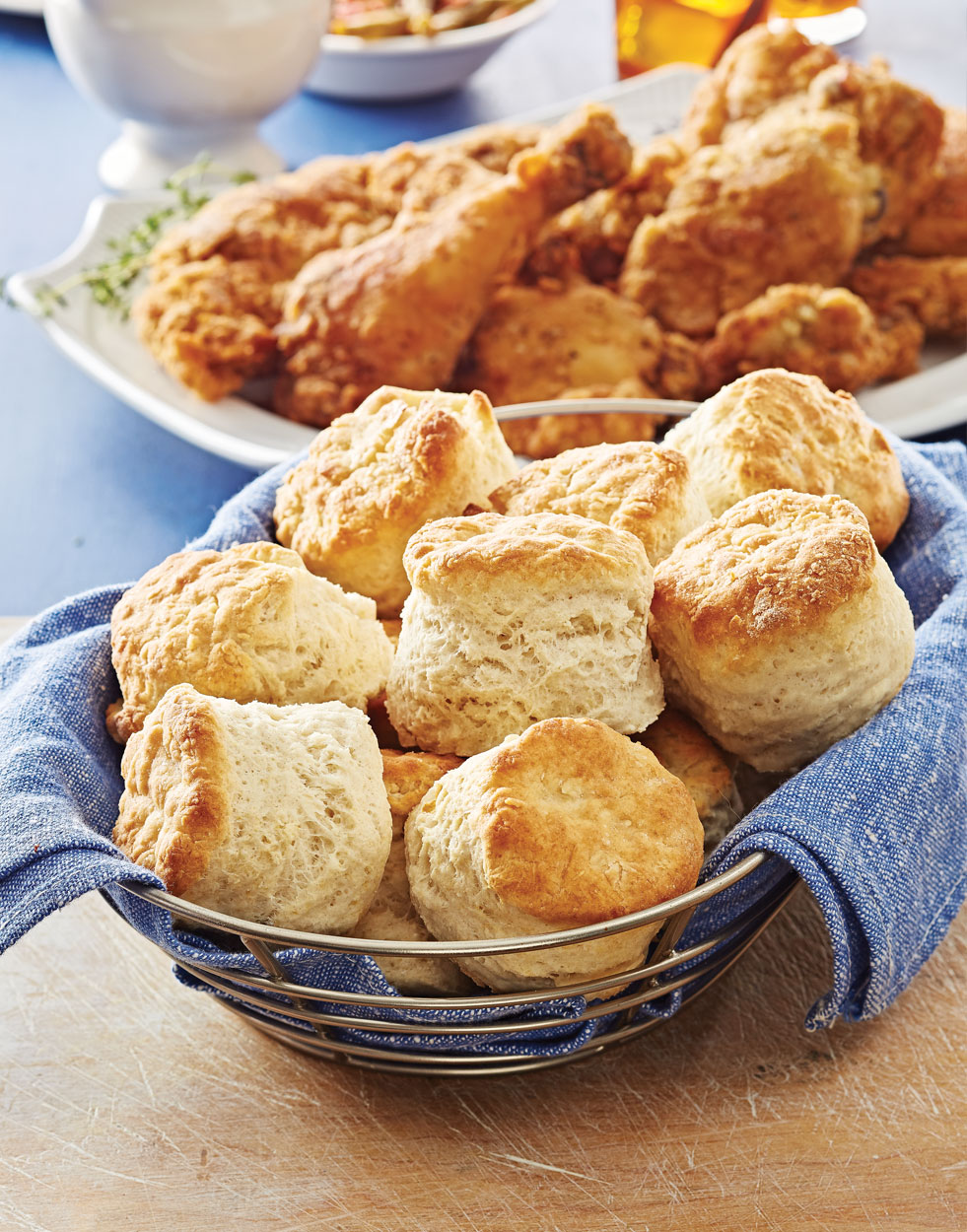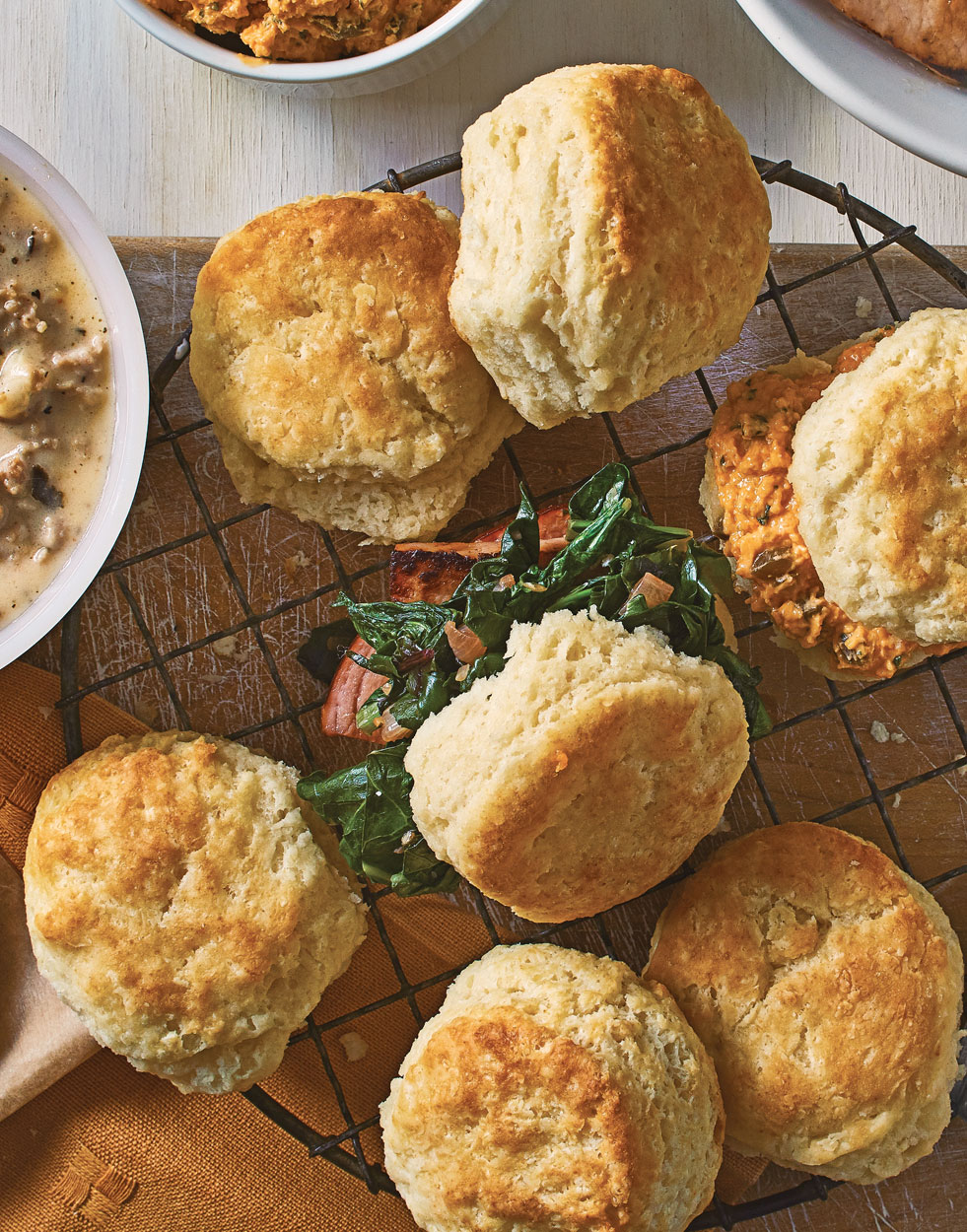How to Make Better Biscuits
Here in the Test Kitchen, I’m known as the go-to girl for biscuits. It’s because biscuits have always been one of my favorite comfort foods. Warm from the oven simply slathered with butter, or covered with sausage gravy, there’s no wrong way to eat a biscuit. Growing up, my Mom made Bisquick biscuits, and I’ve eaten my share of canned biscuits too, but once I learned how easy biscuits are to make, there was no going back. So welcome to Biscuits 101.
by Robin Stephens

Photo: Getty Images
(Note: This post contains affiliate links. As an Amazon Associate, we earn from qualifying purchases made through affiliate links.)
I love biscuits. Warm, fragrant, fresh from the oven biscuits. Makes my mouth water just to think about them. I’m not exactly sure when my biscuit-making obsession began. Looking back, I didn’t learn biscuit making from my Grandma. A wonderful cook, she could turn toast and eggs into a gourmet breakfast. My Mom was a fabulous baker, turning yeast into the most marvelous delights. But her biscuits – strictly Bisquick. And me, as a young bride with a limited budget, I turned to canned biscuits. Cheap canned biscuits at that. I thought if my Mom and my Grandma, two of the best bakers in the world didn’t make homemade biscuits, they must be difficult. Well, turns out making biscuits from scratch is really quite simple. There’s no reason to be intimidated by them. With just a few ingredients and some quick tips, you too will be on your way to biscuit nirvana.
Tips for Making Homemade Biscuits
The first place to start is with a good recipe. I know there are people who can make biscuits by just adding the ingredients by feel. And they come out perfect every time. I am not one of those people. Baking is a science and I like generally to stick to the roadmap. A quick and easy biscuit recipe is our Sour Cream Biscuits. This one uses self-rising flour and sour cream.

A more traditional, and one of my favorite recipes to use is our Buttermilk Biscuits. This is a light, fluffy, biscuit with a slightly crunchy top.

There are a few tips to keep in mind to help you on your journey to the best biscuits ever. Let’s begin with the ingredients. Flour, sugar, baking powder, salt, liquid, and fat. Ordinary ingredients - but mix them together and magic happens. First, the flour. I like to use a mix of all-purpose and cake flour. This combo gives the biscuits a mix of structure and tenderness that I really appreciate. However, you can make a delightful biscuit with just all-purpose flour and some people swear by the Southern-style “soft” flour such as White Lily.
Let’s talk about fat. Some people like use lard or shortening, but I prefer butter. I love the flavor it adds, and it helps with the browning. Also, it helps a bit with the rise. The butter has a small amount of water in it, which creates a little steam as it melts. If I’m mixing the dough by hand, I like to freeze the butter, shred it with a box grater, and toss into the flour mixture. If I’m using the food processor, I’ll use cold butter cut into cubes.
For the liquid, I like the slight tang of buttermilk. Sometimes I will use whole milk or a combo of whole milk and heavy cream. I know this goes against my advice of follow the recipe, but there is some leeway! I’d say follow, then improvise to make it your own.
Now that you have your ingredients, lightly mix them until everything just comes together. You don’t want to overwork the dough. Then I like to dump the dough out on my counter and gently form it into a cohesive mass. I’ve found it’s best to pat the dough into thickness you want to cut out. A rolling pin tends to compress the dough and we don’t need that! Also, why dirty another tool? Now your choice is how to cut the biscuits into shape. If you want to cut out rounds, be sure your cutters are sharp. Here are our favorite biscuit cutters in the Test Kitchen. Now isn’t the time to use a jelly jar. It might be the right diameter, but it can compress the edges, sealing them, and keeping the biscuits from rising as high as they should. You should cut straight down with that sharp cutter – no twisting you don’t want an uneven rise! You can also form the dough into a square or rectangle and cut with knife. A bench knife is handy to transfer to your baking sheet. Quick tip: flip them upside down as you transfer them for a beautiful smooth top crust.
Now quick chill time. As you’re preheating the oven, pop the pan of biscuits in the refrigerator. This short chill will help the biscuits maintain their shape while they bake. You’ll want to bake them in the upper third of the oven for the best browning.
Biscuit Fixes
THE PROBLEM: Crumbly biscuits
• Too much flour/dough too dry
THE FIX: Don’t scoop flour, spoon it!
• Spoon the flour into the measuring cup, then level it off
with a knife. Scooping the flour into the cup can compress
it or it can become packed
THE PROBLEM: Crumbly Biscuits
• Not enough fat or wrong fat used
THE FIX: Measure the right fat accurately
• Cut fats ⅛–¼ inch in size (if too small, they leave smaller pockets when melted) affecting the crumb
• Measure correctly (carefully cut along cut lines or measure fat using a dry (nested) measuring cup and level it with a knife or spatula)
• Don’t use margarine or spread (they contain too much water)
THE PROBLEM: Browned Unevenly
• Oven temperature is too hot or oven has hot spots
THE FIX: Use a thermometer
• It never hurts to use an oven thermometer to check for accuracy and hot spots.
THE PROBLEM: Underbaked biscuits
• Check your pans and oven temperature
THE FIX: Use the correct pan
• Different pans affect bake time so be sure to follow your recipe on the correct pan to use
• It never hurts to use an oven thermometer to check for accuracy and hot spots
THE PROBLEM: Not soft & fluffy
• Too much air circulation
THE FIX: Perfect placement & pan
• Arrange biscuits so they’re almost touching
• Use a pan with 1½ inch sides or higher
THE PROBLEM: Not soft & fluffy
• Fat pieces are too large
THE FIX: Pea-sized pieces
• Fat pieces should be pea-sized or the size of coarse crumbs, like cake crumbs
THE PROBLEM: Off flavor
• Can be from dough not being mixed well enough
THE FIX: Whisk dry ingredients thoroughly
• Whisk the dry ingredients to thoroughly mix in the leavening ingredients since you don’t want to overmix the dough after the liquid is added
THE PROBLEM: Hard crust
• The right pan and placement in the oven can impact biscuits as well as too hot of temperature or too much air circulation
THE FIX: Use the correct pan, etc.
• Follow your recipe for the correct pan to use (glass conducts more heat than metal and dark baking pans absorb more heat and transfer it to the baked goods)
• It never hurts to use an oven thermometer to check for accuracy and hot spots
• Don’t bake on the bottom rack (place in upper-middle portion of oven)
• Arrange (non-drop) biscuits so they’re almost touching
And there you have it. The best biscuits ever, hot from your oven in no time.
For more information, you can purchase our Biscuit Baking 101, where Robin and John teach you how to make light and airy, picture-perfect biscuits every time.
Product Recommendations
Interested in cooking? Need some supplies?
Check out some of the tools we like. All products featured on Cuisine at Home are independently selected by our editors; we may earn an affiliate commission from qualifying purchases through our links.